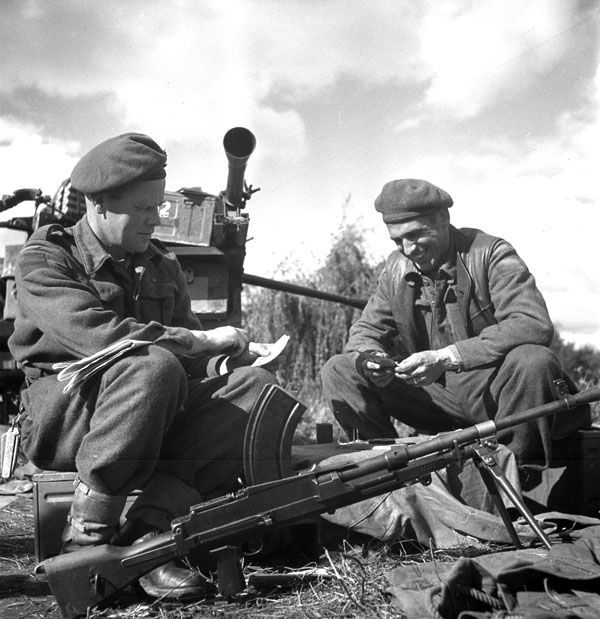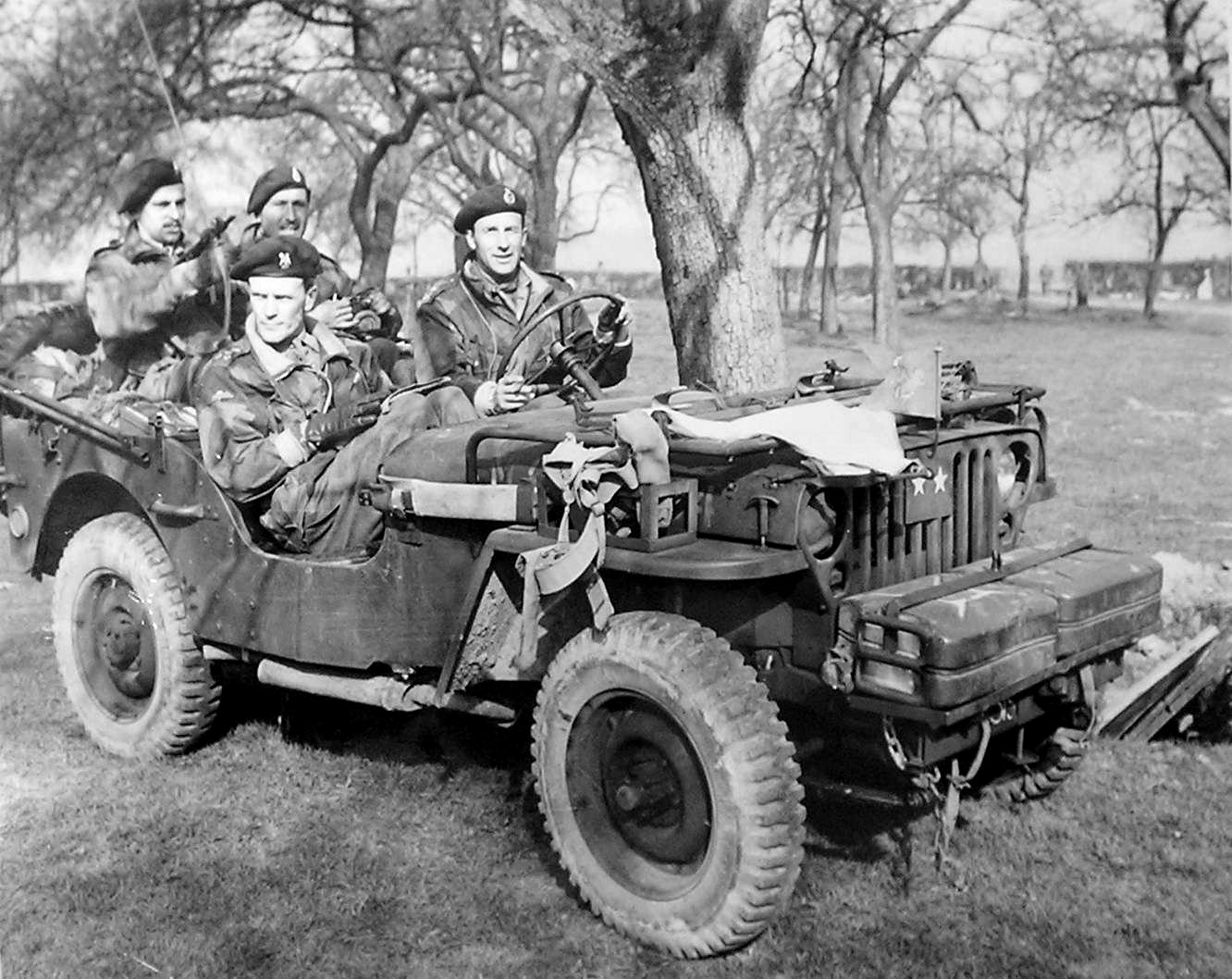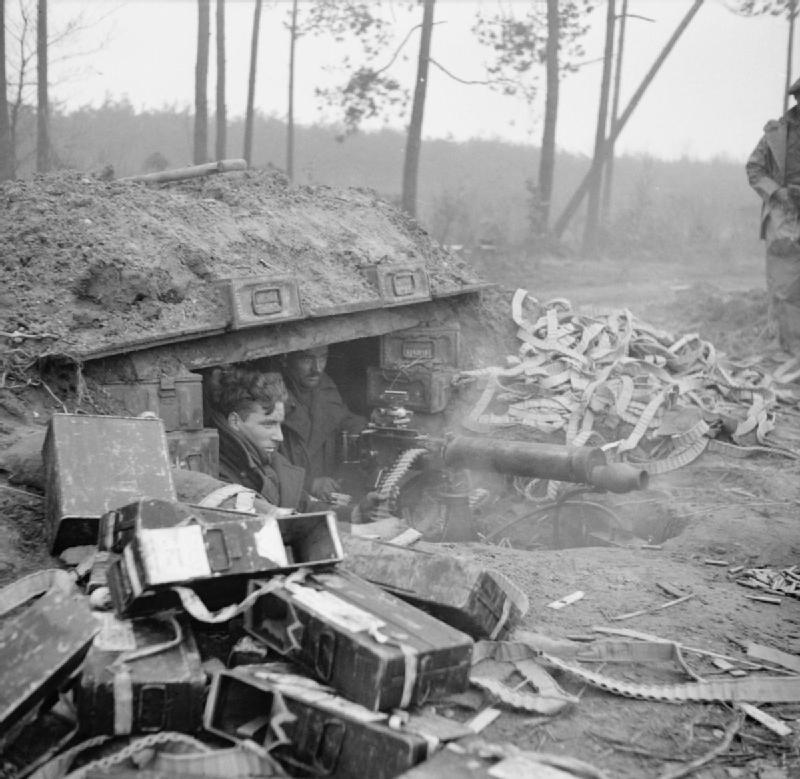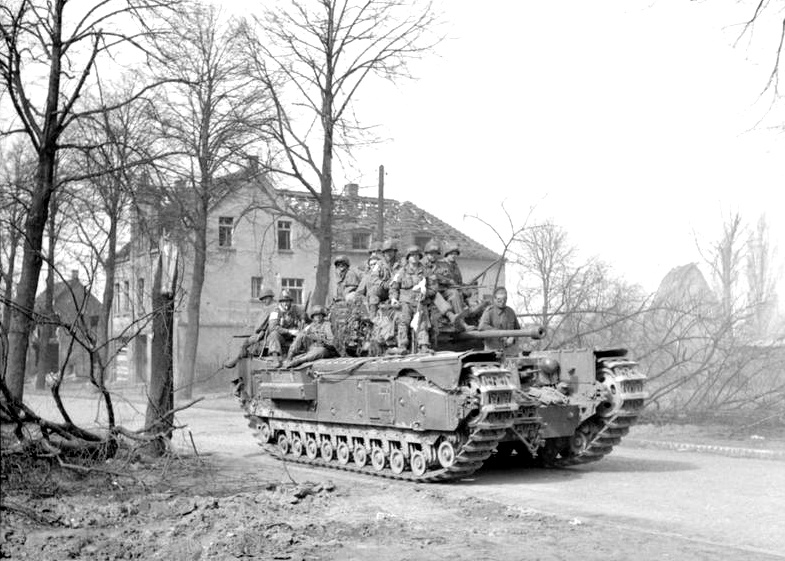Formations of the Division were: 3rd Paratroopers Brigade, 5th Paratroopers Brigade, 6th Air Landing Brigade, 22nd Independent Paratroopers Company, and the 6th Airborne Armored Recon (Recce) Regiment, together with units of artillery, engineers, signals, and the services. The task of the 3rd Paratroopers Brigade, scheduled to drop first and operate on the divisional left, was to clear and hold an area on the western edge of the Diersfordt Woods (Wesel) woods which contain the Schnepfenberg (Wesel) feature and to establish patrols through these Woods. The 8th Paratroopers Battalion would seize the northern while the 9th Paratroopers Battalion the southern parts of the Brigade area with the 1-CPB in the center. Hq 3rd Paratroopers Brigade would initially be established in the dropping zone to the north, then with the 8th Paratroopers Battalion, but on completion of the brigade, the task would move into 1-CPB area.
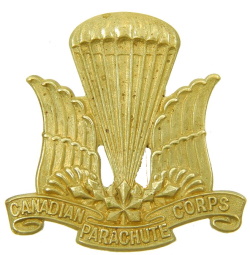 The 1-CPB was to drop just north of the woods in order to seize, clear, and hold an area along the western edge including slightly more than half a mile of the main road running north-south. The Battalion’s objective was a group of houses in the southern section of this area. Charlie Co (1-CPB) was the first to clear the road junction and corner of the woods in the northern sector. All companies would then pass through Charlie Co in order to clear and hold the area of the houses where Bn Hq would later be established. Baker Co (1-CPB) was to move southwest through the woods to provide flank protection to seize and hold the crossroads about which the houses were grouped, and to consolidate the southern sector. All companies would then carry out extensive local patrolling for their own protection and in order to attempt to establish contact with British and American troops.
The 1-CPB was to drop just north of the woods in order to seize, clear, and hold an area along the western edge including slightly more than half a mile of the main road running north-south. The Battalion’s objective was a group of houses in the southern section of this area. Charlie Co (1-CPB) was the first to clear the road junction and corner of the woods in the northern sector. All companies would then pass through Charlie Co in order to clear and hold the area of the houses where Bn Hq would later be established. Baker Co (1-CPB) was to move southwest through the woods to provide flank protection to seize and hold the crossroads about which the houses were grouped, and to consolidate the southern sector. All companies would then carry out extensive local patrolling for their own protection and in order to attempt to establish contact with British and American troops.
(38) Everything possible was done to make all ranks thoroughly acquainted with this plan. During intervals between briefings, personnel played volleyball, softball, basketball, touch football, and sundry improvised sports. Sunbathing was also a popular pastime, the weather remaining warm. On March 23, the Battalion had a full day beginning with the reveille at 0400. In the morning all ranks were embussed and moved with full gear (war scales of equipment) to the Chipping Ongar airfield in order to fit parachutes and stow away kit bags and weapons in designated aircraft. Returning to camp at noon, the Battalion completed briefing arrangements and held church services for Romans, Catholics, and Protestants at 1800. As reveille the next morning was to be at 0200, the Brigade Commander ordered all personnel to be in bed by 2000, the hour when the artillery barrage over the Rhine began. The unit diarist recorded on the eve of the battle: Morale top-notch.
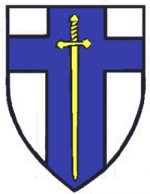 (39) The weather on March 24, 1945, turned out as predicted by the forecasters. Unlimited visibility existed over our bases in the UK, on the continent, and over the target area, although a considerable smoke haze persisted over the latter throughout the operation (US Observer Report). A message sent out by FM Montgomery shortly before 1700, March 23, announced to all concerned that Operation Plunder – Varsity would be mounted as planned. All airborne and troop carrier forces were alerted at once. The UK 2-A launched its assault over the Rhine at 2100 that night and the US 9-A at 0300, the following morning. While the ground troops pushed on in the early hours of March 24, the airborne forces were forming up.
(39) The weather on March 24, 1945, turned out as predicted by the forecasters. Unlimited visibility existed over our bases in the UK, on the continent, and over the target area, although a considerable smoke haze persisted over the latter throughout the operation (US Observer Report). A message sent out by FM Montgomery shortly before 1700, March 23, announced to all concerned that Operation Plunder – Varsity would be mounted as planned. All airborne and troop carrier forces were alerted at once. The UK 2-A launched its assault over the Rhine at 2100 that night and the US 9-A at 0300, the following morning. While the ground troops pushed on in the early hours of March 24, the airborne forces were forming up.

 The US 17-A/B took off from bases in France, while the UK 6-A/B was lifted from England. Escorted by aircraft of Fighter Command and of the British and American Tactical Air Forces, the two mighty air fleets converged near Brussels and made for the Rhine. Over the bridgehead area, an air umbrella was maintained by nine hundred fighters, while deeper into Germany fighter formations kept enemy aircraft away from the battle zone. A great weight of artillery fire from the west bank of the Rhine prepared the way for the airborne drop, and a few minutes before 1000, the ground troops saw the aircraft of the first parachute serial arrive.
The US 17-A/B took off from bases in France, while the UK 6-A/B was lifted from England. Escorted by aircraft of Fighter Command and of the British and American Tactical Air Forces, the two mighty air fleets converged near Brussels and made for the Rhine. Over the bridgehead area, an air umbrella was maintained by nine hundred fighters, while deeper into Germany fighter formations kept enemy aircraft away from the battle zone. A great weight of artillery fire from the west bank of the Rhine prepared the way for the airborne drop, and a few minutes before 1000, the ground troops saw the aircraft of the first parachute serial arrive.
 For the next three hours relays of aircraft came into the dropping and landing zone areas in an immensely thrilling and inspiring demonstration of Allied airpower; over 1700 aircraft and 1300 gliders were employed to deliver some 14.000 troops in the battle areas. Our losses were comparatively light for an operation of this magnitude; under 4% of the gliders were destroyed while the total losses in transport aircraft were 55. Immediately following the glider landings, a resupply mission was flown at a very low altitude by 250 Liberators of the US 8-AAF. The latter was met by heavy flak and 14 were shot down but 85% of their supplies were accurately dropped. (Montgomery)
For the next three hours relays of aircraft came into the dropping and landing zone areas in an immensely thrilling and inspiring demonstration of Allied airpower; over 1700 aircraft and 1300 gliders were employed to deliver some 14.000 troops in the battle areas. Our losses were comparatively light for an operation of this magnitude; under 4% of the gliders were destroyed while the total losses in transport aircraft were 55. Immediately following the glider landings, a resupply mission was flown at a very low altitude by 250 Liberators of the US 8-AAF. The latter was met by heavy flak and 14 were shot down but 85% of their supplies were accurately dropped. (Montgomery)
(40) Tugs and gliders assigned to the UK 6-A/B were operated by pilots of the RAF 38th Group and RAF 46th Group but on the other hand, the entire British Parachute lift was carried in by 240 C-47 of the US IX Troop Carrier Command. The 1-CPB was allotted 35 C-47 of US 61st Troop Carrier Command and was scheduled to drop at 1004. This provided for an approximate Airborne Force strength of 32 officers and 565 men. Forming a part of the van of UK 6-A/B, the 1-CPB dropped third among its units, being preceded by the 8th Paratroopers Battalion, the 3rd Paratroopers Brigade, and followed by the 9th Paratroopers Battalion as well as the detachments of engineers, medicals, and the glider element. The unit war diarist has given a vivid picture of the descent and initial fighting by the Canadian paratroops on German soil.
Reveille was at 0200. Personnel had a good breakfast, en-trucked on lorries at 0445, and proceeded to the airfield arriving at 0615. Personnel put on their parachutes, emplaned, and took off at 0730. The flight from England to the DZ in Germany lasted approximately 120 minutes. The flight across was quiet and uneventful. Unit jumped at 0955 and was widely spread due to the high speed of the aircraft when crossing the DZ. Aircraft did not slow down or lift their tails. Flak was fairly heavy over the DZ and several aircraft were seen to go down in flames.
On landing, most of the Battalion encountered severe machine gun and sniper fire, which accounted for most of the casualties. There was very little artillery fire. Most of the casualties were on the DZ proper, which was covered by mutually supporting German positions. A good many were dropped east of the DZ because of the speed of the planes, and though the enemy fire was not so intense, snipers were fairly active. The Companies reached the rendezvous in good time, and the Battalion objectives were cleared by 1130. Positions were dug, and the men held against probing German patrols, who were either captured or killed. Charlie Co, at the north end of the perimeter, came under severe fire from 100 or 200 yards away and was constantly repelling a probing attack by numbers of German Paratroopers. In the center and south end Able and Baker Cos respectively held the wooded country. Baker Co took large numbers of prisoners which constituted quite a problem because they numbered almost the strength of the entire Battalion. It was fortunate that Krauts were killed by the hundreds otherwise it would have been impossible to corral and guard them in the early hours of the operation. In the late hours of the afternoon, enemy artillery fired, quite inaccurately in the Battalion perimeter. At 1000 recon elements of the 15th Scottish Division linked up with the Battalion, and were warmly welcomed. During the night of March 24-25, three were wounded by enemy shelling. Casualties for the Day were officers: 2 KIA, 1 MIA, 1 WIA, other ranks: 26 KIA, 3 MIA, 34 WIA. Among the casualties was Lt Col J.A. Nicklin, Commanding Officer, killed. Lt J.J. Brunette, killed. Capt J.A. Clancy, missing. Lt J.I. Davies, wounded.
 (41) Reorganization of the 1-CPB on the ground was speedily achieved with Maj G.F. Eadie assuming command on the CO failing to arrive at the rendezvous; it was not until March 26, that the body of Lt Col Nicklin was found hanging from a tree in his parachute. All the companies under Maj P.R. Griffin landed in all cases east of the DZ but within 30 minutes had collected 70% of its personnel and by 1130, cleared its objective, reporting a total loss of 13 casualties. Later that day an enemy attacking force, a troublesome mortar crew, and 3 German patrols in the woods were successfully eliminated in turn and numerous prisoners were captured.
(41) Reorganization of the 1-CPB on the ground was speedily achieved with Maj G.F. Eadie assuming command on the CO failing to arrive at the rendezvous; it was not until March 26, that the body of Lt Col Nicklin was found hanging from a tree in his parachute. All the companies under Maj P.R. Griffin landed in all cases east of the DZ but within 30 minutes had collected 70% of its personnel and by 1130, cleared its objective, reporting a total loss of 13 casualties. Later that day an enemy attacking force, a troublesome mortar crew, and 3 German patrols in the woods were successfully eliminated in turn and numerous prisoners were captured.
Baker Co jumped under the command of Capt S.V. McGowan, vice Maj C.E. Fuller who at the last moment had to remain at the airfield in England. Capt McGowan on landing received a large hole in his helmet and a slight wound but gallantly carried on until killed in action a few days later. Meeting a very warm reception on the DZ, 2 officers and 12 other ranks failed to reach the rendezvous and several others turned up quite late, one not until D 5. Although reduced in strength, the Company took its objective successfully and established patrols to scour the woods. Outstanding work was done by S/Sgt A.B. Paige, who with 6 men, captured 98 prisoners on D-day. Charlie Co preceded the whole of the Battalion in the jump, meeting considerable small-arms fire on the DZ. Maj J.P. Hanson suffered a broken collarbone and had to be evacuated. Capt J.A. Clancy, Company Second-in-Command, was taken prisoner of war immediately upon landing, and from his interrogation, it is apparent that the Germans did not know whether the 1st Canadian Parachute Battalion was part of or surplus to the establishment of UK 6-A/B nor whether it was part of the 3rd Parachute Brigade or of the 5th Parachute Brigade. Although without either of its senior officers, Charlie Co put up a good show against strong opposition while under constant shell and mortar fire.
Concentrating against the Company a threatening force of men and guns in the nearby woods, the enemy prevented several parties from reaching the gliders on the DZ and staged a strong counter-attack at 0530, the next morning. Charlie Co was fully prepared and with the aid of well-placed supporting weapons was able to beat them off. One of the 3″ mortars cooperating with the PIATs succeeded in knocking out a deadly 88-MM self-propelled gun, thus removing a serious threat to the Battalion.
(42) Excellent assistance in the defense was given by the Specialist Platoons of the Support Company under Maj R.C. Hilborn, who became Battalion Second-in-Command on the death of the CO. In close contact with Charlie Co, the Vickers Platoon commanded by Lt E.B. Armstrong set itself up astride the main road with two machine guns on the platoon front and one on either flank. Cpl J.L. Chambers, distinguished himself the first day by leading in the rescue of 3 seriously wounded glider pilots. The next day he himself was wounded with one arm rendered useless yet he insisted upon remaining with his gun until ordered to the RAP; on this being set on fire he returned to his post until the action ended. This platoon gave particularly strong support in repelling the major enemy counter-attack during the first night and later captured a Messerschmidt pilot forced to parachute into its lines. Initial casualties of the platoon included 2 KIA, 2 WIA, and 3 slightly wounded. The Mortar Platoon under Lt G. Lynch landed to the north of the DZ and while attempting to reach the Battalion HQ its Bren carrier suffered a direct hit.
 Outstanding heroism in rescuing its crew led to the award of the Victoria Cross to Cpl Frederick Topham. The mortars rendered valuable service to Charlie Co in particular and in two days suffered total casualties of 5 killed and 5 wounded. The PIAT Platoon with Lt D.O. Bolding in Command was distributed among the three rifle companies, four weapons each. These were most useful in clearing houses and in counteracting enemy SP guns. Platoon casualties were 1 killed and 5 wounded.
Outstanding heroism in rescuing its crew led to the award of the Victoria Cross to Cpl Frederick Topham. The mortars rendered valuable service to Charlie Co in particular and in two days suffered total casualties of 5 killed and 5 wounded. The PIAT Platoon with Lt D.O. Bolding in Command was distributed among the three rifle companies, four weapons each. These were most useful in clearing houses and in counteracting enemy SP guns. Platoon casualties were 1 killed and 5 wounded.
(43) Complete consolidation of the objectives seized could not have been achieved without the close support rendered by artillery from positions on the west bank of the Rhine River immediately after the Airborne troops arrived on the ground. This of necessity had to be observed fire, and each airborne battalion was given a trained artillery observer who parachuted with it in order to radio back fire control directions. The observers adjusted fire visually by day and night and on occasion by sound – for 48 hours they gave to the airborne divisions something unique in airborne annals – observed close support artillery fire in great mass during the crucial period when the airborne division artilleries were seeking to assemble and organize on the ground (America Observer Report). Attached to the 1st Canadian Parachute Battalion, as Forward Observation Officer, Capt Boss gave effective service in calling down a concentration of artillery fire on enemy infantry and guns in the woods northwest of Charlie Co’s location. Unfortunately, he was wounded during the shelling on the afternoon of D-1 and had to be evacuated. Later, German artillery fire grew less and less as the Allies extended their foothold and overran the gun sites.

 (44) FM Montgomery has given great credit to the Allied airborne and ground forces for the impetuous and dash they displayed in the operation. The timing of the airborne attack achieved the element of surprise which had been planned and threw the enemy into confusion, thus accelerating the progress of the assaulting forces. The Airborne Corps took 3500 prisoners during the day and cleared all its objectives according to plan. The US 17-A/B first made contact with the Commandos of the UK 2-A about noon and by dark had achieved all objectives.
(44) FM Montgomery has given great credit to the Allied airborne and ground forces for the impetuous and dash they displayed in the operation. The timing of the airborne attack achieved the element of surprise which had been planned and threw the enemy into confusion, thus accelerating the progress of the assaulting forces. The Airborne Corps took 3500 prisoners during the day and cleared all its objectives according to plan. The US 17-A/B first made contact with the Commandos of the UK 2-A about noon and by dark had achieved all objectives.

 In the afternoon, the 17-A/B also linked up with the UK 6-A/B, who had taken all its objectives by 1330 and had made contact at 1530, with the 15th Scottish Division of the UK 12th Corps (UK 2-A). Recon elements of the Scots were far ahead of the mainland forces in reaching the Canadian lines, however, as it was not until 0430, on D 1, that an armored column of the 15th Scottish Division arrived and it was 0800, before the infantry marched in to consolidate the junction of the forces. Later, the Scots passed through the lines of Charlie Co (1-CPB) and proceeded northward along the main road. Stage one having been successfully completed, efforts now were directed towards the extension of the bridgehead.
In the afternoon, the 17-A/B also linked up with the UK 6-A/B, who had taken all its objectives by 1330 and had made contact at 1530, with the 15th Scottish Division of the UK 12th Corps (UK 2-A). Recon elements of the Scots were far ahead of the mainland forces in reaching the Canadian lines, however, as it was not until 0430, on D 1, that an armored column of the 15th Scottish Division arrived and it was 0800, before the infantry marched in to consolidate the junction of the forces. Later, the Scots passed through the lines of Charlie Co (1-CPB) and proceeded northward along the main road. Stage one having been successfully completed, efforts now were directed towards the extension of the bridgehead.
The British 6th Airborne Division commenced a swift advance eastward with the 15th Division, while the 17-A/B, after linking with the main forces of the US Ninth Army, followed suit. (Eisenhower)
(45) Enemy shelling slackened off considerably during the second night and by dawn, March 26, the 1-CPB was able to detail squads to sweep the DZ for unit equipment and casualties. At 1000, that morning, orders came for the Canadians to move southeast along the roadside and then skirt the eastern edge of the woods to reach the Brigade assembly area. Remaining there for about three hours, the unit, at 1500, began a long trek across the open country to the east following minor roads with frequent changes of direction. After crossing the railway line between Wesel and Hamminkeln, the Battalion paused for a meal in a clump of woods and then crossed the upper Issel before finding shelter for the night in barns and houses.
(46) Although reveille was at 0530 the next morning, there was no time for breakfast before the advance continued. Traversing upon country until crossing the Issel River again further east, the Battalion then was able to advance in the protection afforded by stretches of coniferous trees. The Canadians encountered no resistance until 0945 when the fire came from nearby woods. The Mortar and Vickers Platoons immediately went into action, aided by artillery fire brought to bear upon the enemy. A squadron of tanks and armored cars arrived at 1100 to assist in bringing about the swift collapse of German opposition. The Battalion took 18 prisoners and by 1315, had reached its objective. Whereupon companies took up defensive positions and remained static until morning. Other airborne units had met with similar success in their advances. North of the Lippe River their front was progressively weakening; to add to the weight of their thrust an armored brigade passed through their sector at midnight, on March 27. (Montgomery)







